In 2025, running an agency is less about flashy ideas and more about making the right moves consistently. The channels have changed, client behavior has changed, and the old tricks that used to bring in leads don’t hit the same anymore.
At the same time, there’s never been more opportunity for agencies that treat strategy as a real system, not just a nice-looking slide in the deck. Whether you’re a solo operator or managing a team, you’ve probably already noticed: it’s not about doing everything. It’s about choosing the few things that actually compound.
We’ll break down what’s working for advertising and creative agencies right now. Not theories, not generic tips – just clear, strategic moves you can actually apply. From positioning to outreach, content to automation, we’ll walk through the key areas where great agencies are doubling down in 2025.
Why Marketing Strategy Matters for Advertising Agencies
A lot of agency owners say they have a strategy. But when you look closer, it’s usually a mix of habits, half-tested ideas, and a few channels that happened to work once. That’s not a strategy, that’s just survival.
In 2025, clients are more selective, timelines are tighter, and market signals shift faster than ever. Yet 42% of firms still don’t have a clearly defined digital marketing strategy, and just one in three content-focused companies document theirs. If you’re not clear on who you’re targeting, how you reach them, and how your offer stands out – you’re reacting, not growing.
And that’s what makes strategy matter more than ever. It’s the system behind your choices: how you spend your time, which leads you chase, what you say no to. And it’s not just theory, marketers who build and follow clear strategies are nearly 4x more likely to report success. Without that system, you end up busy but stuck.
A solid strategy gives your agency direction when the market moves. It filters noise, helps you price with confidence, and keeps your team from chasing every shiny tactic that pops up on LinkedIn.
Let’s unpack two core issues that silently hold agencies back and why most founders don’t even notice them until growth plateaus.
The Invisible Bottlenecks Slowing Down Growth
Some agencies plateau even when the founders are working around the clock. Not because of bad work, but because key parts of their system aren’t built to scale.
You’ll see this when:
• The founder handles sales, delivery, and ops – and becomes the bottleneck.
• New leads come in, but they’re not a good fit, and nobody knows why.
• The team spends hours on proposals or pitches, but win rates stay low.
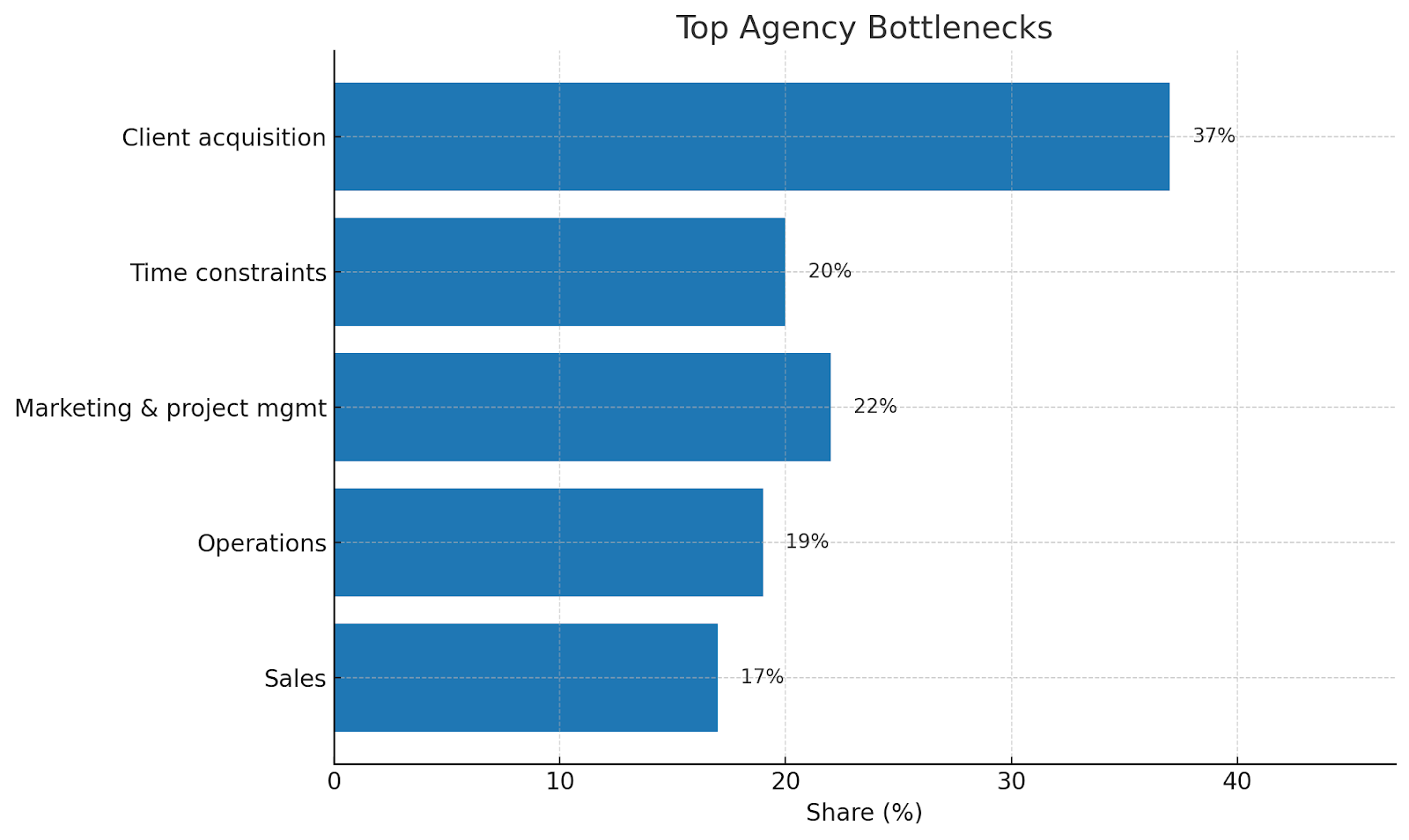
These aren’t dramatic failures. They’re quiet blockers that drain energy and slow momentum. And they’re hard to spot because things still feel “busy.” But busyness without structure leads straight to burnout.
Once you shift from instinctive execution to structured strategy, these bottlenecks become visible – and solvable.
Common Positioning Mistakes Agencies Repeat
One of the biggest strategy leaks is unclear positioning. A lot of agencies try to keep things flexible to catch more leads... but in doing so, they blend into the crowd.
When your pitch sounds like everyone else’s, prospects default to price. And if your niche is too broad, your marketing never hits home.
The usual signs:
• “We help businesses grow” is the main headline on your site.
• Every proposal has to be rewritten from scratch.
• Your lead gen depends on luck or volume, not fit.
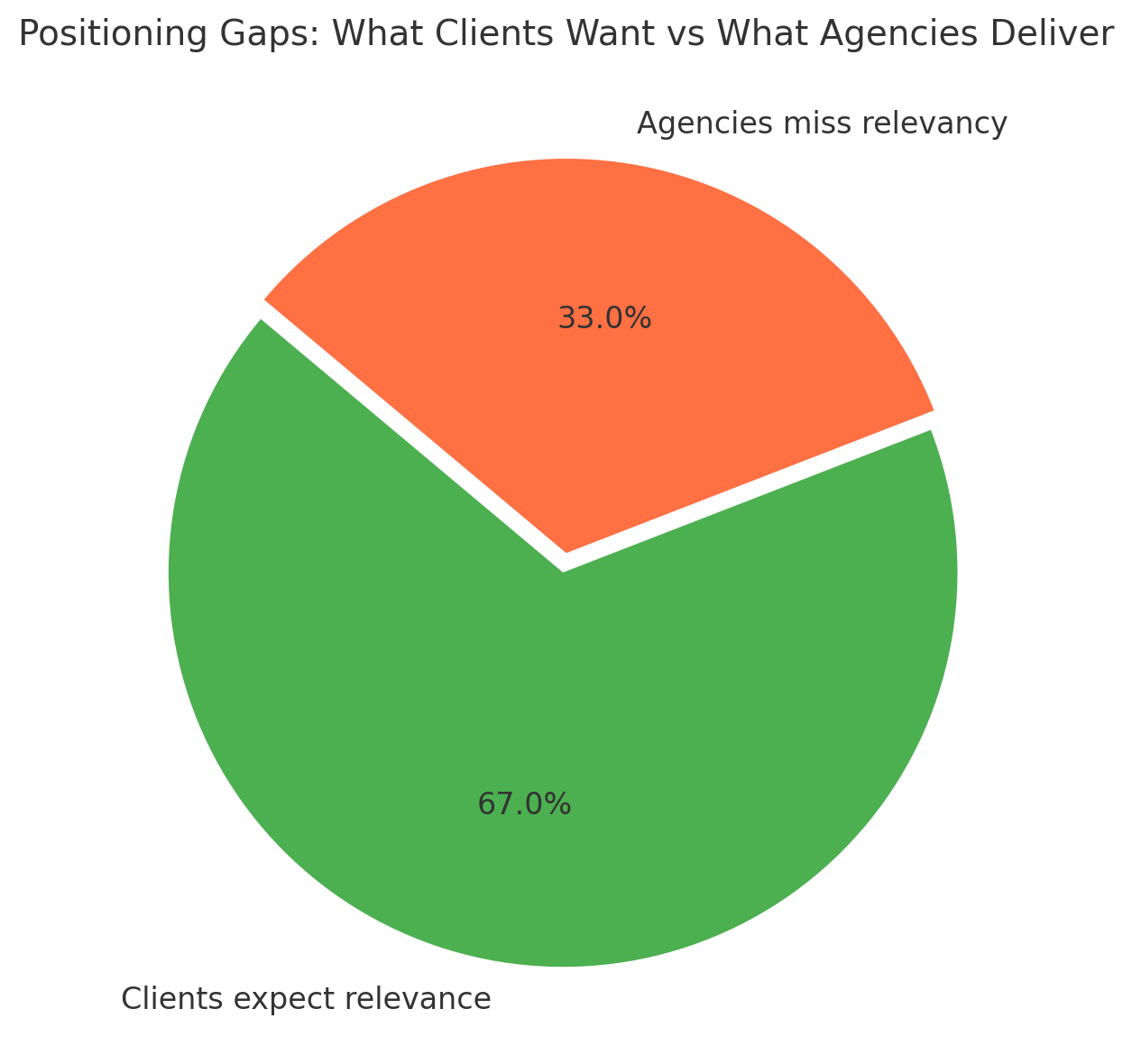
That’s why your positioning needs to be super clear – who you’re for and why you’re the one they should pick. Once that clicks into place, the next big question is: where are your clients actually coming from in 2025? And how do you reach them without guessing every time? Let’s get into it.
Where Advertising Agencies Actually Find Clients in 2025
Once your positioning’s dialed in, it’s time to get visible, not just anywhere, but in the places where the right clients are already looking. And no, we’re not talking about just posting more on LinkedIn and hoping someone bites.
In 2025, winning new clients isn’t about chasing every channel. It’s about knowing where the signal is and cutting through the noise with intent. Let’s look at two approaches that are bringing real results right now: Upwork (yes, seriously) and the good old combo of cold outreach, referrals, and SEO – when done right.
Using Upwork to Attract Qualified Leads
Upwork in 2025 isn’t just for low-budget clients and race-to-the-bottom proposals. The platform has matured, and so have the buyers. Companies are hiring agencies for retainers, not just one-off gigs, and they’re often more responsive and easier to close than cold leads from email lists.
Here’s what makes it work:
• Your profile acts like a mini-landing page. If it’s weak, nothing else matters.
• The job feed is your inbound, but only if you apply with positioned offers, not generic cover letters.
• Niching down (even slightly) helps you filter out time-wasters and attract serious buyers.
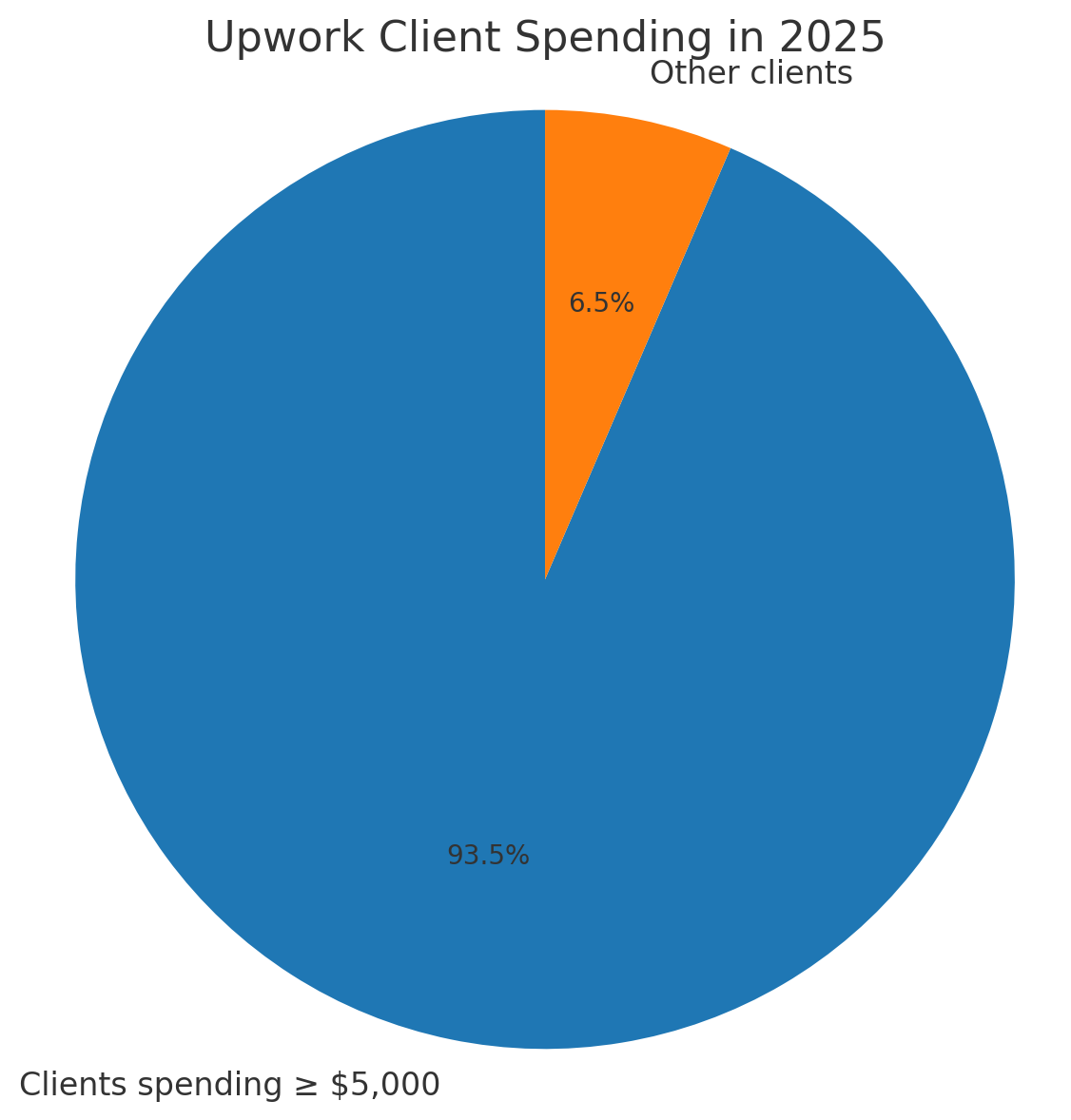
When done right, Upwork becomes less of a freelance platform and more of a discovery engine. Some agencies are landing $5–10K+ retainers monthly with just 2–3 targeted proposals a week.
The key is to treat it like a sales pipeline – with structure, filters, and a real strategy behind how you show up.
Cold Outreach, Referrals and SEO in 2025
Cold outreach still works in 2025, but only when it doesn’t feel like cold outreach. The agencies that get replies aren’t blasting lists or writing long-winded intros. They’re speaking to people with real problems, and they’re doing it fast.
First, relevance beats volume. A short, focused message that shows you actually understand the prospect will go further than fifty generic emails. Think “I saw X, and here’s what I think we could help with,” not “Let me tell you about our full-service creative agency.”
Then there’s follow-up. Most replies happen on the second or third ping. But there’s a line: following up should feel helpful, not desperate. A quick nudge with a new angle or a simple “just checking” works better than long threads or automated bumps.
Referrals, on the other hand, are the most underused channel we see. Most agencies wait for them to happen, but the ones getting consistent intros actually ask. Not randomly, but right after a clear win, when the client’s already happy. And they make it easy: short, fill-in-the-blank intros, not awkward favors.
SEO? It’s not about chasing volume. It’s about being discoverable when someone searches for what you actually do. The best-performing pages we’ve seen are focused, low-fluff case studies, landing pages targeting real client pain points, and simple blog posts that speak human.
These aren’t flashy hacks. They’re the quiet, compounding systems that keep working while you sleep.
If you’re looking for tools to support these channels, we’ve put together a short list of top lead gen tools that actually help you get quality leads fast. Read the full guide here.
Next, let’s talk content and how agencies that actually plan their content are getting compounding results.
How Social Media and Content Drive Growth for Creative Agencies
A lot of agencies think they’re doing content just because they post occasionally. But real content strategy isn’t about staying active; it’s about moving people toward working with you. And that’s where most creative teams slip: they either treat content like a chore, or they overthink it into silence.
The agencies seeing growth in 2025 are the ones treating content and social media as a structured part of their creative agency marketing strategy. They plan what they want to say, where they’ll say it, and how it connects to the rest of the funnel.
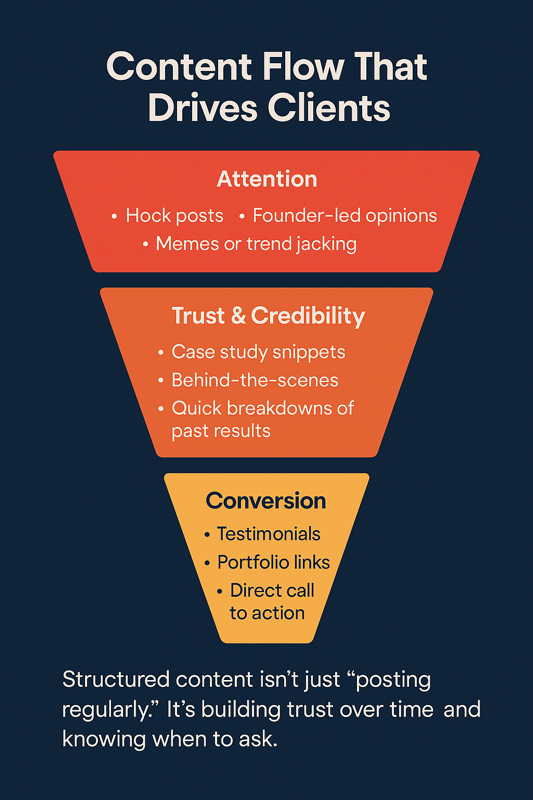
Content Planning That Works for Agencies
Random posting builds confusion, that's fact. The agencies that stand out are the ones with a clear plan behind their content. Not just in format, but in flow. They know what they want prospects to understand this month, what they want them to feel next, and when to make the ask.
Good content planning starts with clarity: what do you actually want to be known for? Not in broad categories like “branding” or “growth,” but in real situations your clients face. That’s what makes people read, bookmark, and reach out.
It also means matching your content cadence to your sales motion. If you run high-ticket retainers, one great post every 10 days beats daily noise. If you sell shorter engagements, maybe your rhythm needs to be faster. The goal is not frequency – it’s fit.
Founder Branding vs Agency Branding
This is where a lot of agency founders get stuck. Should you post as the founder or focus on building the brand account?
Here’s what we’re seeing: in 2025, people still trust people more than logos, especially when budgets are tight and stakes are high. That’s why founder-led content often outperforms brand posts: not because it’s better written, but because it feels closer to the work.
That doesn’t mean you ditch the agency brand. It just means the founder sets the tone. Think of the founder’s content as the spearhead – driving reach, narrative, and credibility – while the brand account reinforces the themes and showcases the broader team.
If you’re short on time, start with founder content. It’s easier to write, faster to test, and builds trust quicker. Once you see what resonates, expand it into content for the brand.
Using Creative Strategy in Advertising Content
Most agencies post case studies or design shots and call it content. But that doesn’t show how you think, it just shows what you made.
What actually converts is creative strategy. The thinking behind the work. Why you made certain choices. What didn’t work. How you adapted. That’s the difference between a portfolio and a growth engine.
In 2025, the strongest content isn’t just polished – it’s transparent. Agencies that open up about process, show the mess behind the magic, and explain their reasoning are the ones earning trust. And trust leads to clients.
Next, let’s walk through a real-world example of how all these pieces come together – the GigRadar strategy in action.
Case Study, GigRadar Strategy for Creative Agencies
When a 19-person PPC agency came to GigRadar, they weren’t struggling to get clients – they were struggling to keep up. Manual bidding on Upwork was eating up 100+ hours a month, and most of that effort went into low-fit leads or dead ends.
What changed?
With a tighter offer, a refined ICP, and a filtered deal flow through GigRadar, they didn’t just save time, they tripled their revenue.
The team cut their weekly Upwork time to under 5 hours by tracking only the briefs that matched their sweet spot. Instead of casting a wide net, they focused on fewer, better leads. The result: $25K+ in monthly revenue, consistent project flow, and no more burnout from chasing every open job.
This isn’t a story about luck or hacks. It’s about building a system that works with your positioning – and using the right tools to stay focused.
👉 See the full breakdown of the GigRadar PPC case here
Next, let’s zoom out and talk about the bigger picture: what strategic assets are actually worth building if you want long-term leverage.
Building Strategic Assets for Long-Term Growth
Once an agency has a working strategy in place – something beyond guesswork and scattered effort – the next question becomes how to approach marketing and advertising agency growth strategies that actually compound over time.
Most teams chase quick wins. New lead gen tricks, viral posts, temporary momentum. But real growth comes from assets that compound. Things that keep working even when you’re not actively pushing. Things you can build once and rely on again and again.
For some agencies, that means a highly focused lead magnet tied directly to their niche. For others, it’s a library of case studies written with actual insight, not fluff. Sometimes it’s a tool, sometimes it’s a training series, sometimes just a killer client onboarding doc that makes people say “finally.”
These assets don’t show up overnight. They come from noticing patterns in your pipeline, in your delivery, in the questions clients keep asking. And from deciding that, instead of repeating the same answers, you’ll build something reusable.
The agencies that play the long game don’t just create for marketing. They create to reduce friction. To make the next sale faster. To make onboarding smoother. To make referrals easier. That’s how strategy turns into systems. And systems into scale.
In the next section, we’ll get into the mechanics: how to take all of this and turn it into a repeatable, scalable strategy – one that doesn’t break every time you land a new client.
How to Build a Repeatable and Scalable Ad Agency Strategy
Once you’ve nailed the basics, the next challenge is making it repeatable. Not just for the founder, not just when there’s time, but as a rhythm the agency can run on week after week.
Scalability in agency work rarely comes from bigger teams or longer hours. It comes from decisions that don’t need to be made twice. From strategies that aren’t re-invented every month. From client flows that don’t collapse the moment you close two deals back to back.
This section focuses on building a strategy your team can execute without hand-holding. One that grows with you, not against you.
Creating a Custom Marketing Strategy for Your Agency
The idea of “one-size-fits-all” templates is appealing, especially when you’re swamped. But almost every fast-growing agency reaches a point where copying someone else’s playbook starts doing more harm than good.
Your offers are different. Your sales style is different. Your lead sources don’t convert in the same way someone else’s do.
So instead of plugging in generic tactics, the real move is to work backwards from how your best clients already found you. What made them trust you? What made them convert? Where did they first hear about you? The answers to those three questions usually tell you more than hours spent on trend analysis.
The point isn’t to make a perfect strategy. It’s to make one that’s yours, and then tune it like a machine.
Strategy vs Tactics in Advertising Agencies
A lot of advertising campaign agency teams confuse the two, and it’s not just a semantic thing. When you rely on tactics without a strategy, you end up trying too many things and doubling down on none.
Strategy is about what you won’t do. It gives shape to your pipeline, your offers, and your time. It says: “This is our lane. This is how we play.”
Tactics are the tools. They change as the market shifts. But the strategy holds everything in place.
When your team knows the strategy, they know how to filter new ideas. They know when to say no, and more importantly, when to say “not yet.”
And that’s when growth becomes intentional, not accidental.
Using ICP Messaging and Funnels in Your Strategy
Every scalable agency eventually circles back to the same realization: if your messaging isn’t tuned to your ideal client, even great tactics won’t convert.
It’s not about being louder. It’s about sounding familiar, like you’re already in the client’s world before they even reach out.
That’s where your ICP work pays off. You don’t just define the niche, you start speaking in their timing, their logic, their worries. You shift the conversation from what you offer to what they’ve been thinking about anyway.
And once the message lands, the funnel does the rest. You no longer chase. You just guide.
Next, we’ll flip the lens and look at the patterns where agency strategies tend to break. Even the good ones. Even the ones that worked just a few months ago.
Ready? Let’s walk through the most common strategy mistakes and how to avoid repeating them.
Common Marketing Strategy Mistakes in Advertising Agencies
Most agencies don’t fail because they ignore strategy altogether. They fail because they confuse strategy with busywork.
It usually starts with good intentions. You map out goals, define your ICP, pick a few channels, maybe even run a workshop. But when the pressure hits – pipeline dries up, a big deal falls through – it’s tempting to throw it all out and start chasing something new. The next platform. The latest trick. The sixth pivot this year.
One common mistake is building a strategy that’s too theoretical. It sounds great in a deck, but it doesn’t translate into day-to-day execution. Your team doesn’t know what to prioritize, so they try everything and dilute the focus that made your offer strong in the first place.
Another trap: strategy by committee. When every department pulls in a different direction, you end up with a plan that’s technically agreed upon, but nobody’s actually following. Messaging gets blurry. Funnels get bloated. Everyone’s busy, but nothing compounds.
And then there’s the classic overcorrection. A campaign underperforms, so the whole strategy is deemed broken. But more often than not, it’s just the execution or the timing that needs tweaking. Not the entire foundation.
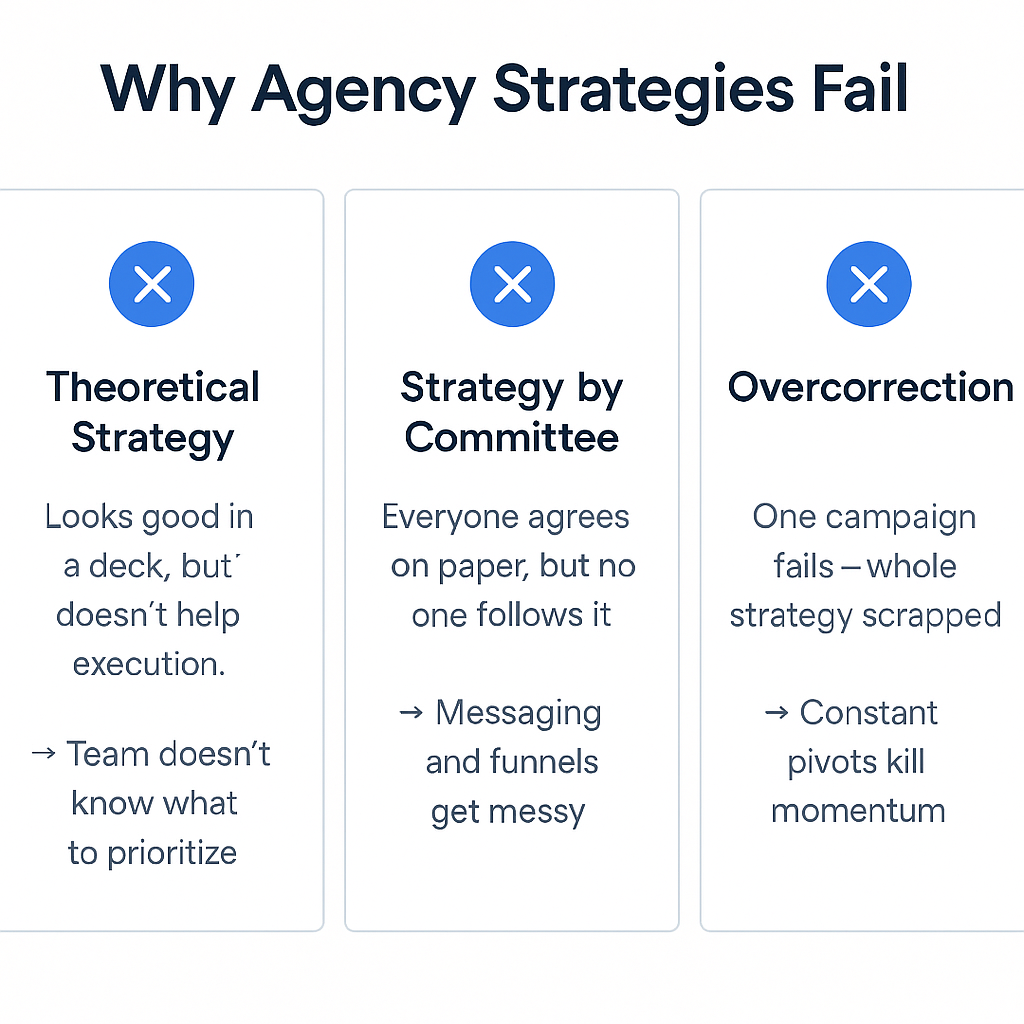
The most resilient agencies treat strategy like a living system. They update it, but they don’t rebuild it from scratch every quarter. They stay close to what’s working, cut what’s not, and give their ideas time to breathe.
In the next section, we’ll offer a practical way to structure that system – a digital marketing campaign agency template tailored to how agencies actually work in 2025.
Marketing Strategy Template for Advertising Companies
You don’t need a 60-slide Notion board to build a marketing strategy for advertising company teams. What you need is a format your team actually uses. One that keeps priorities visible, makes decisions faster, and gives you a way to say no when something shiny shows up.
At its core, a solid advertising agency strategy comes down to a few key anchors:
First, your offer. Not just what you do, but how you frame it. “We run Facebook ads” isn’t an offer. “We help B2B SaaS companies turn $10k/month ad budgets into qualified demos without brand fluff” is. The more specific and tied to a real outcome, the better.
Second, your ideal clients. Not just verticals, but people. What roles they’re in, what they’re trying to get done, what’s already frustrating them. If your messaging doesn’t speak to those moments, it won’t land, no matter how clever your copy is.
Third, your inbound and outbound paths. Where do they come from? Who finds you and why? What content leads them in? What pitch gets them to reply? You don’t need ten channels. You need one or two that compound.
Fourth, your conversion flow. Once someone’s interested, what happens next? What do they see? Who do they talk to? What do they get? This is where most strategy in advertising agency work tends to stall, not at awareness, but at inconsistency. Fixing this means fewer leads wasted.
And finally, your growth levers. What happens when the base system works? Where do you double down? That’s where you slot in experiments, new platforms, bigger campaigns, but only once the rest is stable.
This structure is meant to drive how you operate week to week. A good marketing strategy for advertising company teams isn’t something you present once. It’s something you check against every decision.
.png)
From Strategy to Execution with GigRadar Automation
Most agencies know what they should be doing, but the bottleneck is rarely the strategy itself. It’s the gap between plan and action. Between knowing you need to follow up and actually sending the email. Between documenting a process and actually using it on a live project.
That’s where automation becomes more than a productivity trick. It becomes the layer that protects your strategy from drift.
GigRadar lets you build your marketing system directly into the tools your team already uses. Qualified leads from platforms like Upwork get pulled in automatically. Custom filters help you spot the right-fit clients, not just the loud ones. Templates streamline proposals, follow-ups, and handoffs, without turning everything into a script.
You still run the strategy. But now, it runs with you, not behind you.
If you’re serious about building something sustainable, something you don’t have to rebuild every quarter, GigRadar gives you the infrastructure to scale.
And if you’re ready to stop chasing leads and start building systems that bring them in, let’s talk.




.jpg)
.jpg)
.jpg)
